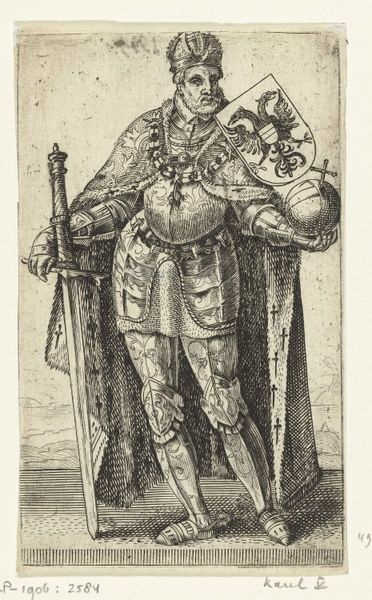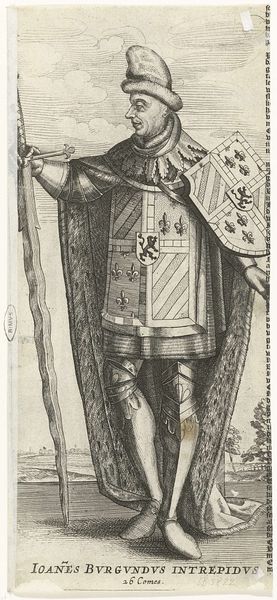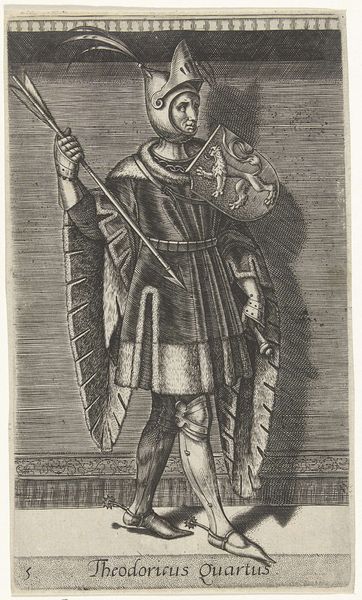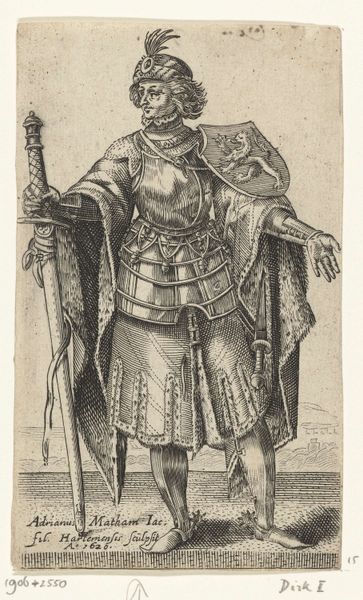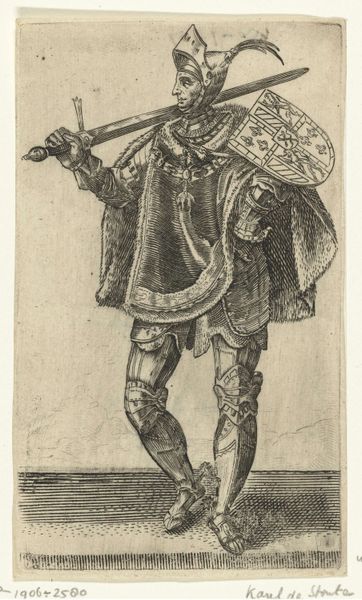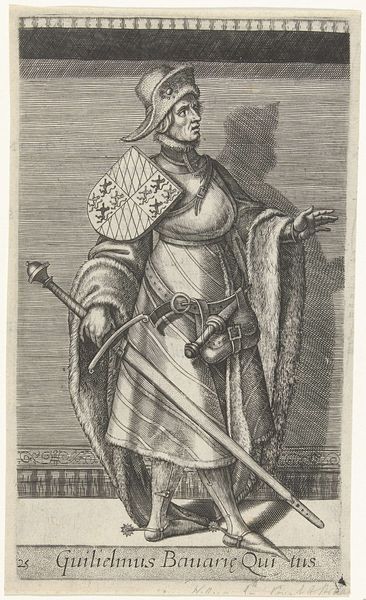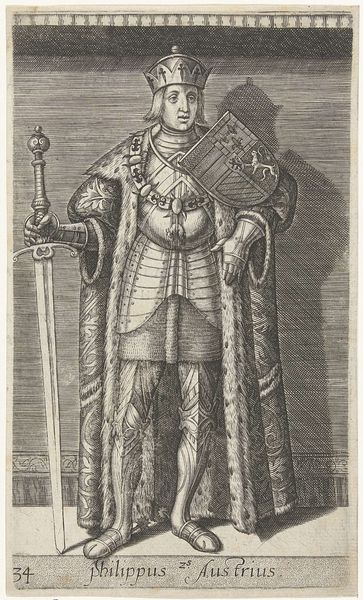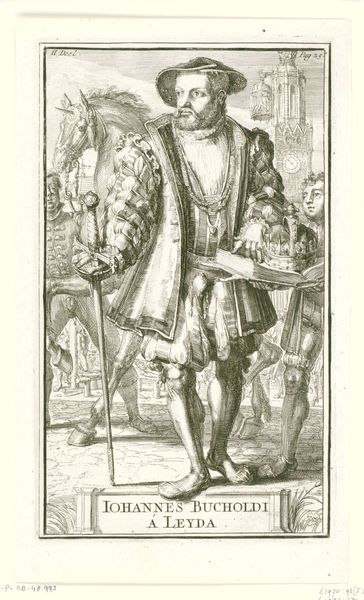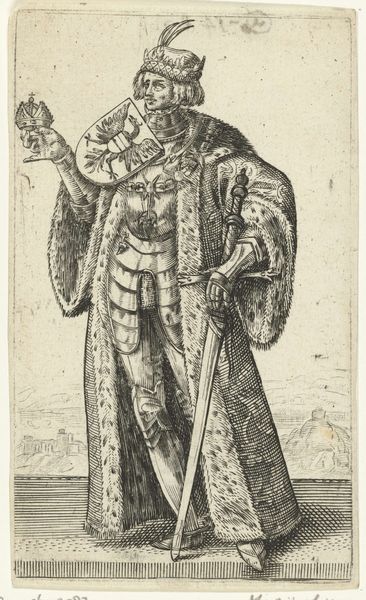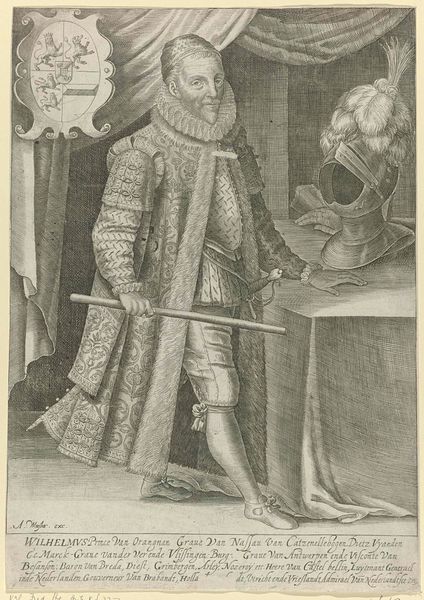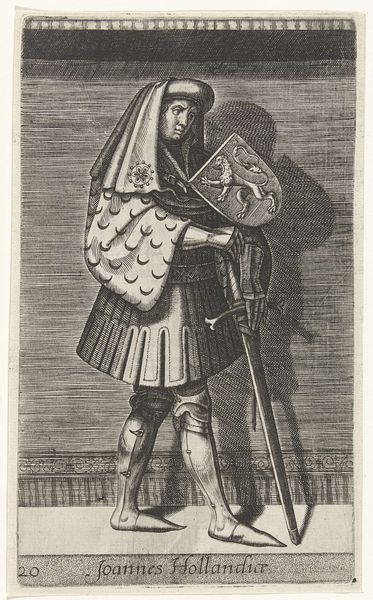
print, engraving
#
portrait
# print
#
mannerism
#
history-painting
#
northern-renaissance
#
engraving
Dimensions: height 192 mm, width 117 mm
Copyright: Rijks Museum: Open Domain
Editor: Here we have Philips Galle’s 1578 engraving, "Portret van François-Hercule de Valois, hertog van Anjou," currently held in the Rijksmuseum. It's a rather formal portrait. What strikes me most are all the visual cues to power, particularly the armour and heraldry. What do you make of it? Curator: It's a fascinating exercise in the language of power. Armour, certainly, but look at the heraldry – more than just identification, it's a visual embodiment of lineage and claim. The fleur-de-lis, repeated motifs; these aren't just decoration, they are assertive declarations. Even the crown itself acts as a sort of potent logo. What emotional impact does all of that symbolism have? Editor: I feel like the sheer volume of symbols almost diminishes them. It feels staged, a performance of power rather than genuine authority. Like the Duke is overcompensating for something… Curator: Precisely! Consider the historical context. Anjou, though a prince, was a somewhat controversial figure, a perennial candidate for various thrones. All these symbols could represent a deep-seated anxiety about the legitimacy of that claim and recognition from his peers. Editor: So, it's not just a display of power, but maybe a plea for acceptance as well? The visual equivalent of desperately trying to convince everyone of your importance. Curator: Indeed. Galle, knowingly or not, has captured the psychological weight of ambition, anxieties, and perhaps also the performative aspects of being in the aristocracy. Editor: I never thought of it that way. I’ll definitely be keeping an eye out for those kinds of details in other portraits now! Curator: And that constant interplay, that’s how imagery truly speaks, and is understood within its cultural moment.
Comments
No comments
Be the first to comment and join the conversation on the ultimate creative platform.
